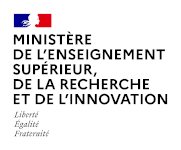NSF Proposal & Award Policies & Procedures Guide
A revised version of the NSF Proposal & Award Policies & Procedures Guide (PAPPG), NSF 13-1, was issued on October 4, 2012 and is effective for proposals submitted, or due, on or after January 14, 2013.
Chapter II.C.2.f(i)(c), Biographical Sketch(es), has been revised to rename the
“Publications” section to “Products” and amend terminology and instructions accordingly. This change makes clear that products may include, but are not limited to, publications, data sets, software, patents, and copyrights.
…
(c) Products
A list of: (i) up to five products most closely related to the proposed project; and (ii) up to five other significant products, whether or not related to the proposed project. Acceptable products must be citable and accessible including but not limited to publications, data sets, software, patents, and copyrights. Unacceptable products are unpublished documents not yet submitted for publication, invited lectures, and additional lists of products. Only the list of 10 will be used in the review of the proposal.
Each product must include full citation information including (where applicable and practicable) names of all authors, date of publication or release, title, title of enclosing work such as journal or book, volume, issue, pages, website and Uniform Resource Locator (URL) or other Persistent Identifier.
Altmetrics: Value all research products
Heather Piwowar
Nature 493, 159 (10 January 2013) | doi:10.1038/493159a
Published online 09 January 2013
What a difference a word makes. For all new grant applications from 14 January, the US National Science Foundation (NSF) asks a principal investigator to list his or her research “products” rather than “publications” in the biographical sketch section. This means that, according to the NSF, a scientist’s worth is not dependent solely on publications. Data sets, software and other non-traditional research products will count too.
…






